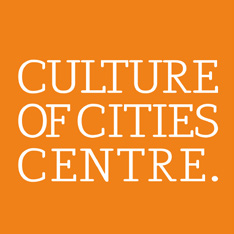City Life and Well-Being: The Greyzone of Health and Illness Research Project
Canadian Institutes of Health and Illness (CIHR) Description
As the natural breeding ground for the development of science and specialized knowledge, the city is home to medical progress.It is a site of stimulation and fragmentation; its very productivity produces at the same time anxiety over the application of such knowledge to life. The Grey Zone project concerns itself with the relation of healthfulness to city life, reflected in collective representations of health and its management (challenging ‘normative’ paradigms along the way) as determinants for citizenship and well-ordered environments.
The enigmatic body, never a self-evident object of expert knowledge, depends upon ineffable influences that exceed determination. Here, the ambiguity of the body as such enables a rich and contested interpretive landscape. The Grey Zone project develops a framework for studying health and illness by isolating a range of case studies in which this tension between medicine’s promise and its particular interpretations and incorporation becomes visible and dramatic under conditions of city life.
The interpenetration of culture and medicine can be thought of as a zone of ambiguity in which the necessity for clear-cut actions and decision making of practitioners and clients involved in relationships to modern medicine is always haunted by unspoken assumptions, understandings and equivocations that cannot be completely mastered and made explicit. We call this region of ambiguity the Grey Zone because it is the space of indeterminacy upon which all determination ultimately depends. We inquire into the ways in which our knowledge of health and illness is conceptualized in practice and linked to collective values regarding life in complex modern times and in particular to notions of how urbanity functions in such relationships. In this sense, the cultural element of health and illness and of medical practice lies not simply in science but in the ideas and beliefs that include relationships to objects, and particularly, relations to the body, and the contested judgment that always needs to be applied to any particular case about what seems best here and now. As Hans Gadamer suggests, the great achievements of medicine and its advances in technology and informatics which mark the development of objective knowledge comes unencumbered by a science (or art) of interpretation and judgment that still remains necessary for using and deciding among the options provided by such accomplishments, necessary for informing and grounding the decision-making that must invariably be worked out as part of the application of such knowledge (Gadamer, 1996).
Current research conducted under the auspices of the Grey Zone project uses resources from classical theorizing, the humanities and social sciences that bear upon the interdisciplinary study of the relationship of the city to problems of health, illness, and disease. Texts range from Plato’s Republic and modern work dating from the Enlightenment through sociological work on the medical system and the biomedical model such as Parsons, Goffman and Foucault. The work continues to locate examples of modern theorizing that focus upon ways in which ambiguity is approached as an opaque area of indistinction that pervades any system of thought in the shape of incalculable influences, always promising to compromise the enlightenment anticipation of the unilinear advance of knowledge. Such work includes texts from Simmel, Benjamin, Lacan, Levinas and Agamben’s notion of ‘bare life”, all used to identify dialectical collisions in public health over issues connected to self-monitoring, and the tensions between body, mind and polity. These relationships can be seen to place new burdens upon practitioners, clients and the system in general not only in relation to bureaucratization (and its discourse of time, space and scarcity of resources), but to ethical questions that circulate around questions of governance regarding the quality of care, advice, expertise, information and conflicts between dependency and self-determination. These tensions are made visible in a series of case studies of health and illness in the cities.
The two-sided character of the city means that its very productivity produces at the same time anxiety over the application of such knowledge to life. Because the city is both stimulating and fragmented, differences become vivid around the question of the relation of healthfulness to life, reflected in collective representations of health and its management that become normative and always arguable models for both citizenship and a well-ordered environment. In this project we develop a framework for studying collective health by isolating a range of case studies in which the Grey Zone becomes visible and dramatic under conditions of city life.

